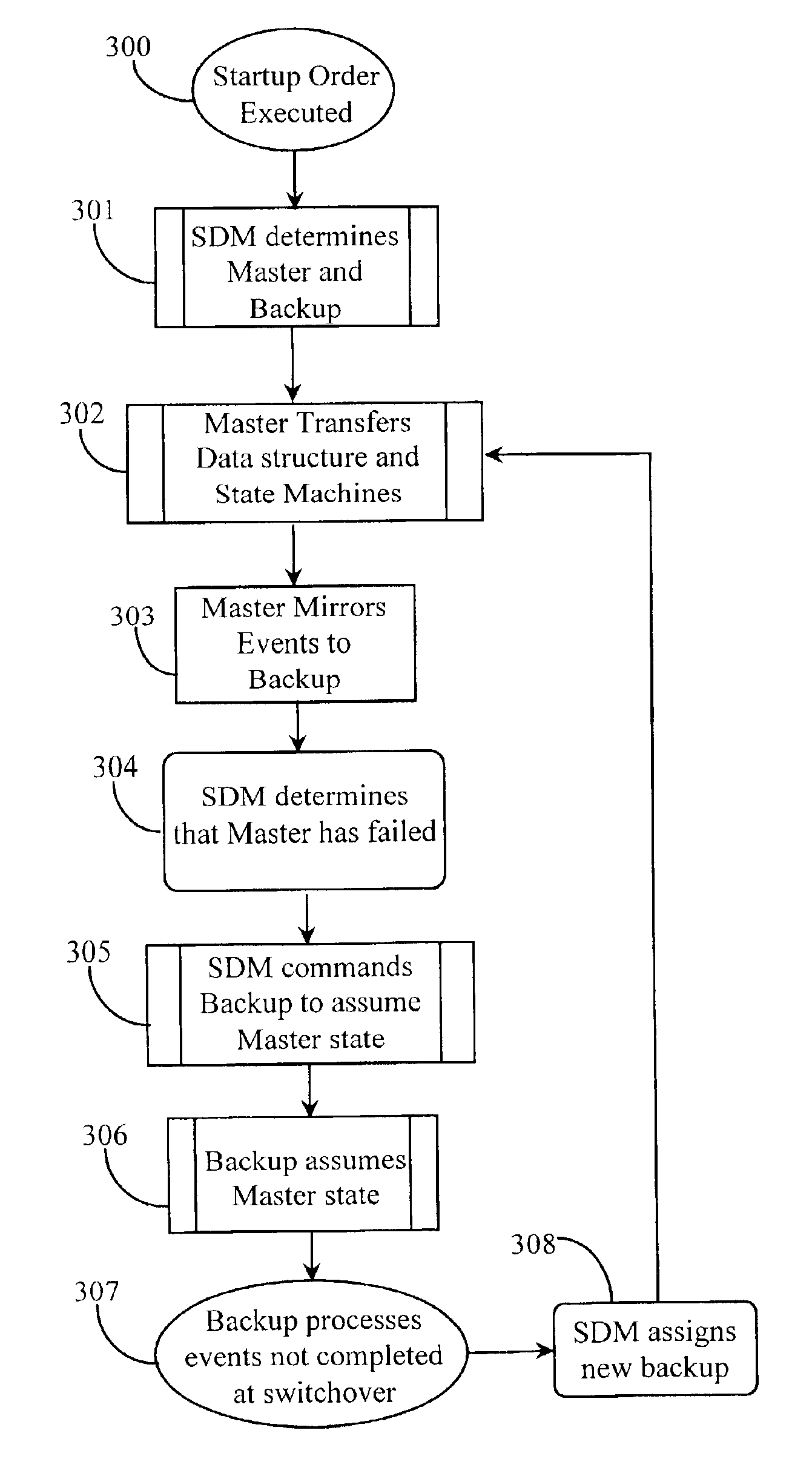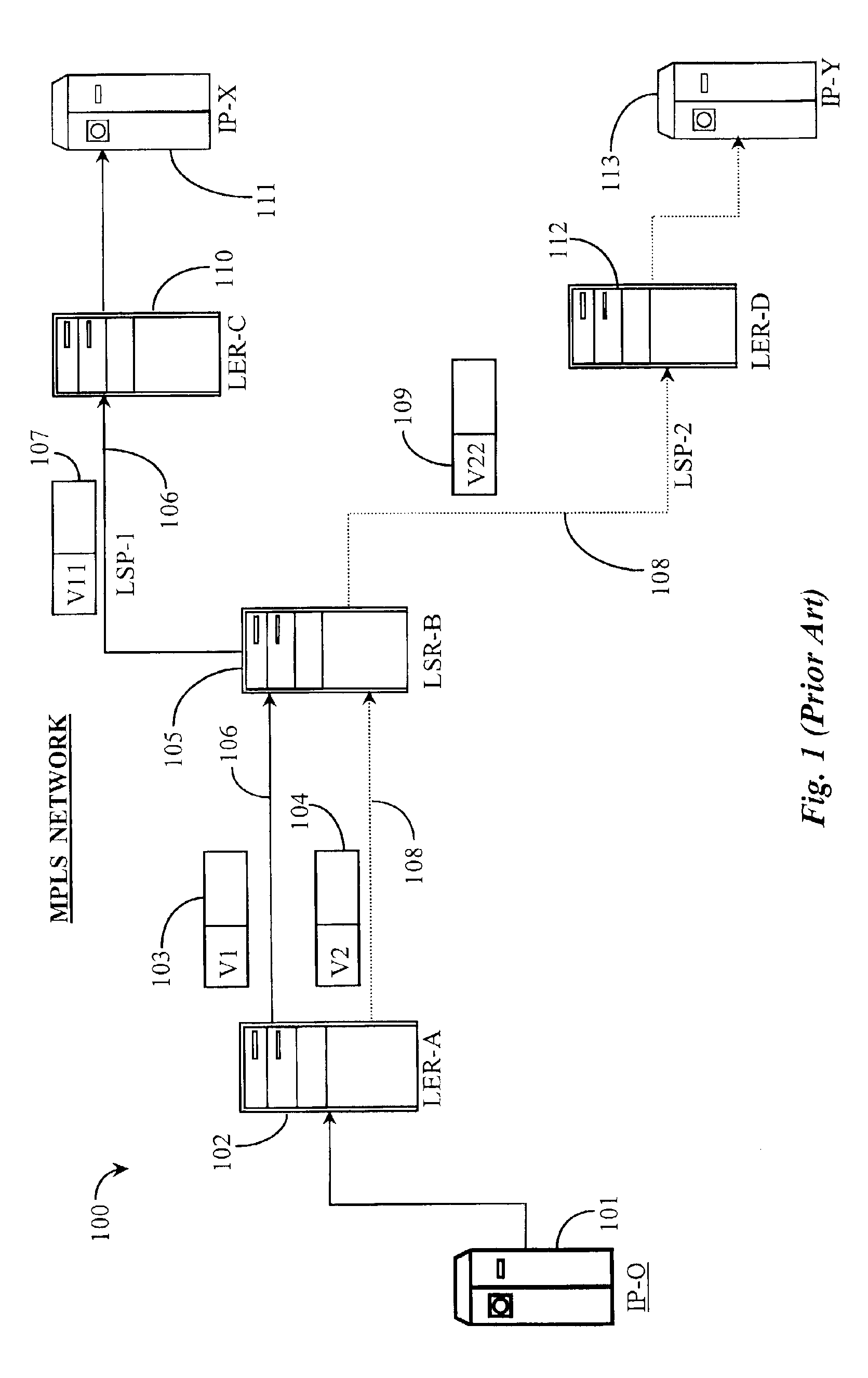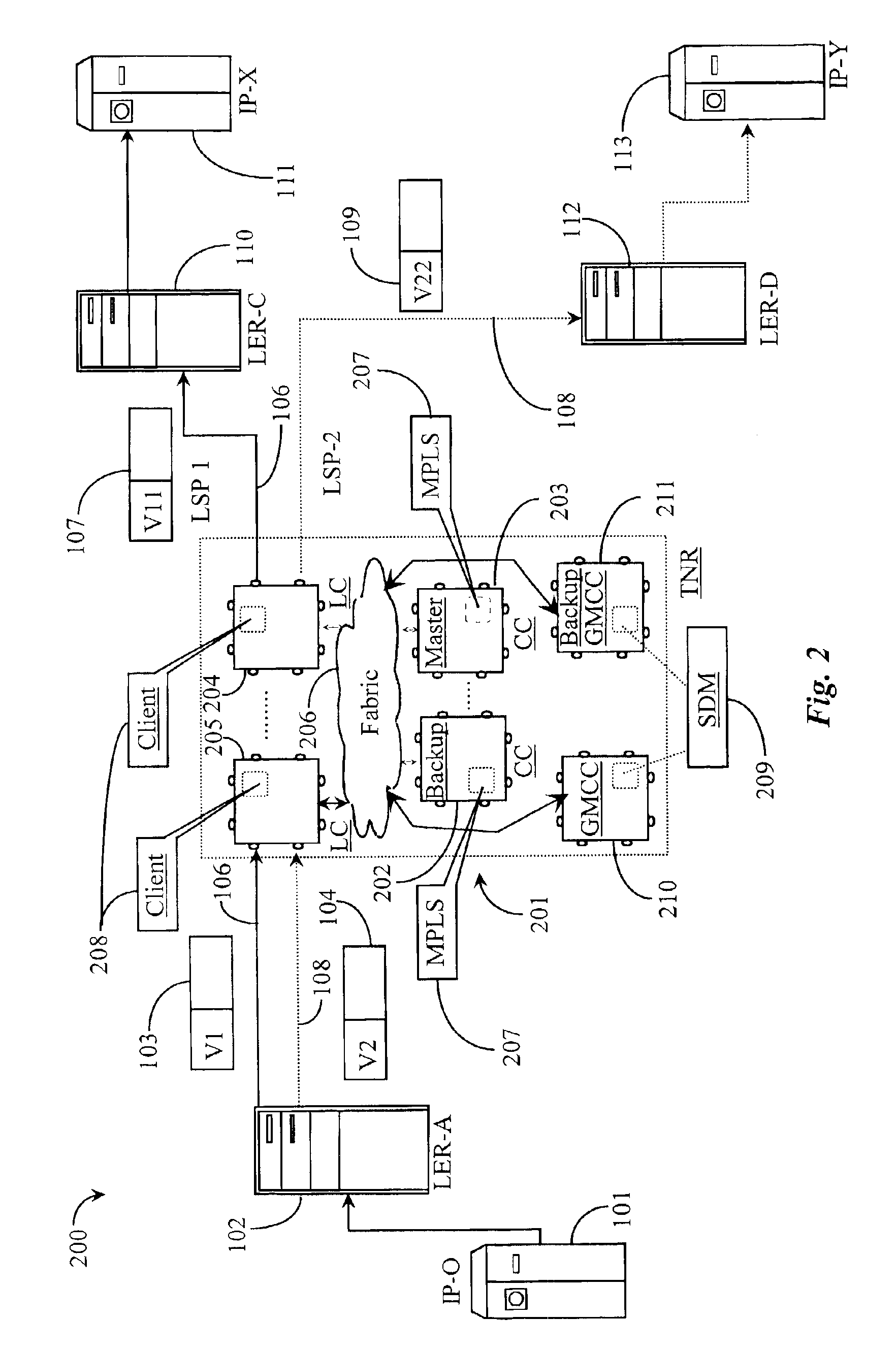Fault-protection mechanism for protecting multi-protocol-label switching (MPLS) capability within a distributed processor router operating in an MPLS network
- Summary
- Abstract
- Description
- Claims
- Application Information
AI Technical Summary
Benefits of technology
Problems solved by technology
Method used
Image
Examples
Embodiment Construction
[0031]FIG. 1 is a network overview illustrating separate LSPs 106 and 108 existing in an MPLS-based network 100 according to prior art. As described above with reference to the background section, MPLS enables traffic engineering through label switched paths (LSPs) set up in the network. MPLS network 100 may be assumed to exist in a portion of an Internet network or other compatible wide-area-network (WAN). An IP host system 101 (IP-0), is illustrated in this example and represents a source of data entering (ingressing) into MPLS network 100. IP-0101 may be an Internet Service Provider (ISP)-hosted node or any other type of vendor-sourced network node capable of routing data. MPLS may be compatible with a number of bandwidth reservation protocols known in the art such as resource-reservation-protocol (RSVP) and label-distribution protocol (LDP). In this prior-art example, it will be assumed that LSPs are engineered according to bandwidth reservation request and availability. However...
PUM
 Login to View More
Login to View More Abstract
Description
Claims
Application Information
 Login to View More
Login to View More - R&D
- Intellectual Property
- Life Sciences
- Materials
- Tech Scout
- Unparalleled Data Quality
- Higher Quality Content
- 60% Fewer Hallucinations
Browse by: Latest US Patents, China's latest patents, Technical Efficacy Thesaurus, Application Domain, Technology Topic, Popular Technical Reports.
© 2025 PatSnap. All rights reserved.Legal|Privacy policy|Modern Slavery Act Transparency Statement|Sitemap|About US| Contact US: help@patsnap.com



